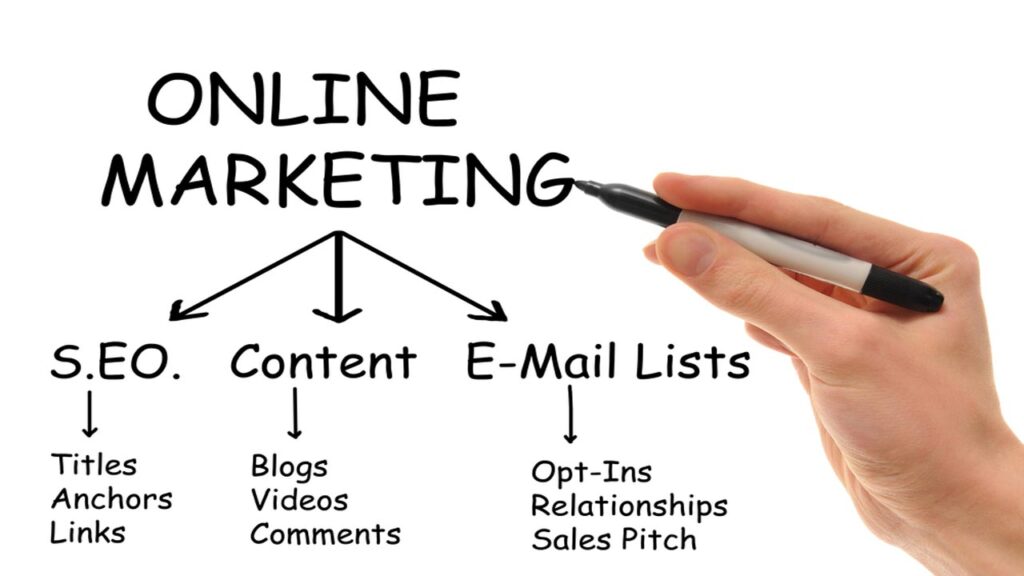Maximize Your Sales Funnel: 10 Proven Strategies to Generate Lead Growth
Brett Lewis
Lead Generation - April 3, 2024

To generate lead growth, you need tactics that deliver. Cut straight to the heart of lead generation with this guide to 10 proven strategies. Find out how to attract and retain high-quality leads, perfect your sales funnel, and convert prospects more efficiently. Get ready to apply these direct, fluff-free tactics for clearer, more effective lead generation.
Key Takeaways
- Lead generation is a multi-stage process that begins with understanding your audience and ends with them becoming paying customers, requiring strategies such as inbound marketing, effective use of lead magnets, and clear differentiation between types of leads.
- High-converting landing pages are crucial for capturing lead information, and their effectiveness can be increased through consistent messaging, quality visuals, user-minded design, optimized forms, and continual A/B testing for improvement.
- Email marketing is an essential tool for nurturing leads into customers, which can be optimized through engaging content, personalization, segmentation, and the use of automation to manage repetitive tasks and tailor communication.
The Essentials of Lead Generation

Grasping the essentials of lead generation is the first step towards maximizing your sales funnel. It’s the process of attracting prospects and nurturing them until they become paying customers. This nurturing process involves understanding your audience and providing them with genuine value that separates you from the competition. It’s not just about attracting leads; it’s about attracting the right leads – those who are more likely to convert and become paying customers. This is achieved by collecting leads’ contact information and employing effective strategies.
One such strategy is inbound lead generation, which is cost-effective and has long-term benefits. Let’s delve into a deeper understanding of lead generation.
Understanding Lead Generation
Imagine a visitor stumbles upon a business through a marketing channel, engages with a call-to-action (CTA), and lands on a page where they can provide their details in exchange for an offer. Lead generation is actively taking place, marking the second stage of the inbound marketing methodology. A lead is a person who shows interest in a company’s product or service and provides contact information, making them the perfect candidate for marketing efforts.
Nurturing this lead – understanding their interests and needs, and providing value through content – can bridge the gap between attraction and conversion. With a good understanding of lead generation, it’s time to explore the role of lead magnets in attracting potential customers.
The Role of Lead Magnets in Attracting Leads
Picture this: a webinar that provides a deep dive into a topic your target audience is passionate about. This webinar is a lead magnet – a high-value piece of content accessible in exchange for user information. It might be an ebook, a white paper, or even a free downloadable guide. This not only provides value to potential leads but also makes a more personal connection, solving their pain points, and attracting them to your business.
Offering these lead magnets in online communities encourages users to exchange contact information for valuable content, generating a wealth of potential leads for your business. Having acquired these leads, the next step is to categorize them.
Differentiating Between Types of Leads
Not all leads are created equal. Some may be:
- Marketing Qualified Leads (MQLs) who have engaged with a company’s marketing efforts and are considered potential customers but are yet to be ready for direct sales engagement.
- Sales Qualified Leads (SQLs) who have shown a clear interest in buying a product or service, such as asking for more information or requesting a demo.
- Product Qualified Leads (PQLs) who have used the product and shown a strong interest in becoming a paying customer.
- Service Qualified Leads who have indicated to the service team that they are interested in progressing to a paid version of the service or product.
By focusing on these categories, businesses can generate quality leads that are more likely to convert into loyal customers.
Understanding these categories is vital to nurture leads effectively and tailor your approach to their needs.
Next, we will focus on another crucial component of lead generation – landing pages.
Crafting High-Converting Landing Pages

Landing pages are your digital ambassadors, the first point of contact for many potential customers. They not only welcome visitors but also guide them towards becoming leads. It’s here that we optimize images, ensure mobile responsiveness, and use visual cues to direct visitors’ focus to important elements such as the call to action. But a landing page is more than just a pretty facade. It’s about channeling the visitor’s focus towards the main conversion goal and providing them with a real-life context of your products or services.
Authentic social proof like detailed customer testimonials can add credibility and influence potential leads, while clear and straightforward copywriting can efficiently communicate the offer and solve the visitor’s problem. What elements contribute to a successful landing page? Let’s delve into that.
Components of a Successful Landing Page
A successful landing page is one that converts, and to do that, it needs to have a few key components:
- Consistent messaging from PPC ads to headlines
- High-quality visuals
- Clear value propositions
- Designed with the user in mind (mobile-responsive and fast loading speeds)
This is the first step in ensuring a high conversion rate and effectively turning visitors into leads.
But a landing page is not just about design. It’s also about the forms that capture lead information. Delving deeper, we’ll focus on form optimization.
Optimizing Forms for Higher Conversion Rates
Forms are the gatekeepers of your lead generation efforts. They’re the ones that capture the valuable information you need to nurture leads. But how can you optimize these forms for higher conversion rates? Multi-step forms with simple initial questions can reduce user hesitancy, leading to a higher conversion rate. Providing selectable options instead of manual text entry can ease the completion process, enhancing conversion rates.
Personalized calls-to-action can significantly improve lead conversion rates, achieving up to a 202% increase compared to standard CTAs. And don’t forget about the complexity of the form. It should reflect the customer’s stage in the journey and the level of investment they’re making. However, creating an effective landing page doesn’t stop at form optimization. Additionally, the process involves continual testing and adjustments for optimal results.
Testing and Tweaking for Best Results
In the world of lead generation, there’s always room for improvement. This is where A/B testing comes in, allowing us to compare two versions of a webpage or digital marketing material to see which performs better. This process of continuous testing and optimization is crucial for the success of PPC landing pages, as it allows us to refine our strategies and implement the ones that work best.
This can even extend to automated email marketing, where A/B testing can help find optimal sending times and content preferences to improve engagement. Having optimized our landing pages, the next powerful tool for lead generation to focus on is social media.
Harnessing the Power of Social Media Platforms

Social media has transformed the world of marketing, offering businesses a platform to:
- Engage directly with their target audience
- Generate leads
- Build a community around their brand
- Connect with potential customers
Effective utilization of social media for lead generation goes beyond mere activeness. It requires consistency and the provision of valuable content to your audience.
How do we effectively harness the potential of these platforms? Let’s delve into that.
Building a Strong Social Media Presence
A strong social media presence is key to attracting and engaging with current and potential customers. It’s about optimizing your Instagram profile with:
- a memorable username
- a clear bio with relevant keywords
- a high-resolution profile picture
- contact information
It’s about utilizing Instagram highlights to showcase your expertise and regular engagement with your audience through a content calendar aligned with brand messaging.
And it’s about maintaining consistency in your lead generation campaigns, including ad copy and design coherence, consistent branding, and delivering value. Establishing a strong social media presence is the initial step. The subsequent step involves implementing targeted social media campaigns.
Implementing Targeted Social Media Campaigns
Social media platforms offer businesses an opportunity to reach a global audience. But to effectively generate leads, these campaigns need to be targeted. Personalizing social media campaigns can lead to 76 percent of consumers considering purchasing, while 78 percent are likely to refer friends to businesses that personalize. By carefully segmenting your audience and testing different messages, you can increase your chances of turning social media users into leads.
And by running campaigns across multiple platforms, you can maximize the chances of potential customers seeing your ads, thus increasing visibility and the likelihood of conversion. How do we elevate our social media campaigns? The answer lies in exploring the domain of paid social media advertising.
Utilizing Paid Social Media Advertising
Paid advertising on social media platforms plays a crucial role in building brand awareness and expediting the lead generation process. Platforms like Facebook and LinkedIn offer specific tools, such as lead ads and CTAs on Pages, or LinkedIn Lead Gen Forms, to effectively capture lead information. When designing CTAs for paid advertisements, it’s important that they are relevant and not too far fetched from the content or message being presented in the post. Incentives, such as offering free trials or samples, can effectively generate leads through paid social media campaigns.
Having harnessed the power of social media, we now turn our attention to another potent strategy for nurturing leads into customers – email marketing.
Email Marketing: Nurturing Leads into Customers

Email marketing is more than just sending out newsletters. It’s about nurturing leads through engaging content, personalization, segmentation techniques, and automation.
How do we create engaging email content that effectively nurtures leads into customers? Let’s discover.
Creating Engaging Email Content
Creating engaging email content is about understanding your audience’s needs and providing value. This can be done through a series of targeted emails, such as:
- Welcome emails
- Promotional campaigns
- Educational series
- Renewal or re-engagement emails
By tracking user behavior, we can create content that aligns with consumer interests, further personalizing the email experience.
Regular newsletters can also serve as a powerful tool for customer engagement, providing a consistent and direct way to communicate with the audience. How do we elevate our email campaigns? The answer lies in personalization and segmentation.
Personalization and Segmentation Techniques
Personalizing and segmenting email campaigns can significantly increase email marketing revenue. By personalizing emails, timing them appropriately, and utilizing segmentation to tailor content for specific audiences, we can craft engaging lead nurturing emails. Offering an email preference center during the opt-in process can aid in segmenting the email list and ensuring that subscribers only receive relevant information, which is crucial for lead nurturing.
How can we boost the efficiency of our email campaigns? We can achieve this by exploring the realm of automation.
Automating the Email Nurture Sequence
Automation in email marketing can manage repetitive tasks and enhance campaign performance through features such as A/B testing. Tools like Brevo, Mailchimp, and MailerLite offer capabilities that enable automated communication across various channels, and support the delivery of dynamic content directly to leads’ inboxes. CRM systems can be effectively integrated with these platforms to create a comprehensive lead management ecosystem.
Having delved into email marketing, it’s time to shift our focus to SEO strategies.
SEO Strategies to Drive Traffic and Generate Leads

SEO is the magic word in the digital world, helping content get noticed by search engines, increasing online visibility, and attracting potential customers. How can we utilize SEO to drive traffic and generate leads? The starting point is keyword research.
Keyword Research for Target Audience’s Needs
Keyword research is the compass that guides your SEO strategy. By identifying relevant keywords to target in both organic and paid search strategies, we can enhance our search result rankings, driving traffic, and generating leads.
Using tools like:
- Google’s ‘Searches Related To’ feature
- ‘Answer the Public’
- Google Keyword Planner
- Google Trends
- LSI Keyword Generator
we can identify keywords and questions that align with what our target audience is searching for. By targeting keywords with higher buyer intent, we can maximize our sales funnel for lead generation.
Keyword research, though the first step, is not the only one. Page optimization is the subsequent necessary step.
On-Page Optimization Best Practices
On-page SEO is key to enhancing website visibility and ranking. This involves optimizing website content, structure, and meta-data. Some important aspects of on-page SEO include:
- Descriptive and relevant URL structures aid in clear communication of a page’s content to both users and search engines, impacting SEO effectiveness.
- Internal linking within a website facilitates ease of navigation for visitors and contributes to a logically structured website from an SEO standpoint.
- Google prioritizes websites that ensure a good user experience by being mobile responsive and having fast loading speeds, aspects crucial in on-page SEO.
On-page SEO, while crucial, isn’t the complete picture. Building website authority is an equally important task.
Link-Building Tactics to Boost Domain Authority
Link-building is like the cherry on top of your SEO strategy. It boosts domain authority, which predicts how well a website will rank on search engine result pages. Acquiring high-quality backlinks from reputable and relevant websites can lead to an increase in domain authority.
Some tactics for link-building include:
- Guest blogging on reputable industry sites
- Creating high-quality, shareable content
- Broken link building
- Reaching out to influencers
These strategies can significantly contribute to generating high quality leads for your online lead generation efforts.
Having harnessed the potential of SEO, we now turn our attention to the domain of content marketing.
Innovative Content Marketing to Attract Potential Leads
Content marketing is the soul of lead generation, driving demand, and collecting qualified leads by creating and distributing informative content to the target audience. How do we create content that effectively attracts potential leads? The process begins with developing a content strategy.
Developing a Content Strategy that Resonates
A quality content marketing strategy is centered on customer personas and should fit each step of the sales process. By creating content that addresses the audience’s specific problems, provides relevant solutions, and guides them on their journey, we can ensure engagement with potential leads at various points in their buying cycle. Addressing the audience’s specific questions within lead generation content attracts more people who have a direct interest in the offer.
Creating resonating content is crucial, but not the only requirement. We must also introduce variety in our content formats.
Variety in Content Formats
Variety is the spice of life, and this holds true for content marketing. Engaging the audience through visual content formats such as:
- images
- graphics
- charts
- educational videos
- illustrated summaries
can enhance user interaction and improve on-page SEO. Factual and data-backed content helps build trust with the audience, a foundational aspect of lead generation.
In addition, using interactive tools, templates, quizzes, and webinars can provide significant value to the target audience. Creating a variety of high-quality content, while important, is not the only task. Measuring its performance is equally crucial.
Measuring Content Performance
What gets measured gets managed. Monitoring marketing analytics and engaging with customers can inform which content formats are most effective for lead generation and warrant further optimization. Tools such as Instagram Insights can provide a wealth of information, helping us refine our lead generation strategies on the platform.
Having explored content marketing, it’s time to delve into the world of CRM tools.
Leveraging Customer Relationship Management Tools
Customer relationship management (CRM) software is the secret weapon of many successful businesses, streamlining the management and analysis of interactions with potential customer and existing customers. But how can we leverage these tools for lead generation?
Let’s start by tracking and organizing leads.
Tracking and Organizing Leads
Lead generation tools are important for:
- Organizing and storing leads
- Helping marketing teams connect with website visitors and understand their behavior
- Identifying and catering to qualified leads at different stages of the consumer journey, from awareness to advocacy
- Analyzing website activity
- Engaging with social media
- Communicating through email
Tracking and organizing leads is important, but not the complete process. Analyzing data for improved targeting is the next step.
Analyzing Data for Improved Targeting
Data is the new oil, and businesses that know how to analyze and use it effectively are the ones that get ahead. CRM systems offer centralized databases that provide visibility into all customer communications, including purchase history and service requests, essential for understanding lead behavior and preferences. By analyzing sales data and tracking performance metrics, we can gain actionable insights into consumer behavior.
Analyzing data for improved targeting, while crucial, isn’t the only step. We must also integrate CRM with other lead generation tools.
Integrating CRM with Other Lead Generation Tools
A well-structured lead management system that integrates CRM tools is essential for handling lead generation, qualification, nurturing, scoring, and routing efficiently. Some tools that offer capabilities to enhance CRM functionalities in lead management include:
- EngageBay
- Yesware
- Zoho CRM
- Vtiger
These CRM platforms offer capabilities including contact management and lead scoring, allowing businesses to scale their lead management activities.
Having explored CRM tools, we’re now ready to dive into the realm of referral programs.
Referral Programs: Turning Satisfied Customers into Advocates
Referral programs are an often overlooked but highly effective lead generation strategy. By creating a referral program, businesses can reward existing customers for referring new ones, generating leads with minimal effort.
How do we create a referral program that transforms satisfied customers into advocates? Let’s discover.
Designing an Effective Referral Program
A referral program incentivizes existing customers to refer new clients by sharing their positive experiences with their network. Referral programs can adopt various structures such as:
- One-sided
- Two-sided
- Standard
- Tiered
- Multi-step
- Gamified rewards
These different structures are used to motivate participants. The specific type of prize offered can determine the quality of entrants attracted to a referral program, with different rewards appealing to different segments of customers.
Designing an effective referral program is one part of the process. Promoting it is the next.
Promoting Your Referral Program
Promoting a referral program is key to its success. Here are some effective strategies to consider:
- Integrating the referral program into the user onboarding process can significantly increase awareness and participation.
- In-app promotion, such as personalized ‘thank you’ emails sent to referrers and referees, has been effective in driving further sharing and participation in referral programs.
- Influencers can help promote your referral program and increase brand visibility.
- Partnerships with charitable organizations can also be effective in promoting referral programs and increasing brand visibility.
Consider implementing these strategies to maximize the success of your referral program.
Promoting your referral program is a crucial step, but not the final one. Tracking its success is equally important.
Tracking Referral Success
What gets measured gets managed, and this holds true for referral programs. Implementing dedicated tracking through CRM integration can provide detailed insights into referral source effectiveness and lead conversion. Utilizing promo codes unique to each customer for tracking referrals allows for easy identification of successful referral sources. Measurement of overall conversion rates reveals the efficacy of referral programs by indicating the percentage of referred leads that become customers.
Having explored referral programs, we now shift our focus to PPC advertising.
Pay-Per-Click (PPC) Advertising to Generate Immediate Leads
PPC advertising is a model where advertisers pay a fee each time their ad is clicked, targeting users on search engine result pages (SERPs). But how can we leverage PPC advertising to generate immediate leads?
Let’s start by setting up targeted PPC campaigns.
Setting Up Targeted PPC Campaigns
Effective PPC campaigns begin by clearly defining marketing goals, guiding subsequent decisions, and campaign structure. Analyzing competitors’ PPC strategies can provide insights into their targeted keywords, ad messaging, and overall market approach. Carefully targeting lead generation ads is crucial to focus on qualified leads and assess ad performance based on long-term customer conversion.
Setting up targeted PPC campaigns is a vital first step. Optimizing our ad copy and landing pages is the next.
Optimizing Ad Copy and Landing Pages
Creating concise and clear ads with immediate value propositions helps engage potential customers effectively. Crafting effective PPC landing pages requires:
- Clear and direct messaging that aligns with the audience’s intent
- Utilizing specific headlines, subheadings, bullet points, and strong imagery
- A strong call to action (CTA) highlighted on PPC landing pages
- Using clear, action-oriented language with a sense of urgency
- Reducing perceived risk for the buyer
Optimizing ad copy and landing pages, while crucial, is not the final task. We also need to measure and analyze PPC campaign performance.
Measuring and Analyzing PPC Campaign Performance
When measuring PPC campaign performance, it’s crucial to assess the number of people who convert into long-term customers rather than just focusing on initial signups or purchase rates. Tools like HubSpot’s analytics tools provide users with the capability to monitor PPC campaign performance and make changes based on real-time data. Regular control and enhancement based on performance data are foundational to leveraging high-performing PPC ads and modifying those that underperform to ensure a better return on investment.
Having delved into PPC advertising, we now turn our attention to networking and community engagement.
Networking and Community Engagement
Networking and community engagement are often overlooked but highly effective lead generation strategies. By attending local networking events, businesses can build trust with potential clients and partners face-to-face. But how can we leverage these opportunities to generate leads?
Let’s start by exploring local business networking opportunities.
Local Business Networking Opportunities
Networking events enable local businesses to:
- Connect with a diverse group of professionals
- Foster relationships that can lead to referrals and future business opportunities
- Expand referral networks
- Find new business opportunities by engaging with professionals from various industries
Attending networking events is crucial for local businesses looking to grow via word-of-mouth.
Networking, while important, is not the complete process. Engaging with online communities is the next step.
Engaging with Online Communities
Participating in online communities can aid in lead generation by creating quality content that showcases business expertise and attracts potential customers. Engaging with online communities is crucial, but not the only step.
Hosting or participating in local events is the subsequent necessary task.
Hosting or Participating in Local Events
Businesses can gather attendee information through event registration at local events, creating opportunities for lead generation. What follows after generating all these leads? It’s time to summarize and draw some conclusions.
Summary
We’ve journeyed through the world of lead generation, exploring strategies from SEO and PPC advertising to content marketing and referral programs. We’ve seen the importance of nurturing leads through email marketing and the power of networking and community engagement. As we’ve learned, lead generation is not just about attracting leads; it’s about attracting the right leads and nurturing them into customers. So embrace these strategies, implement them in your business, and watch your sales funnel maximize like never before.
Frequently Asked Questions
What is lead generation?
Lead generation is the process of attracting and nurturing prospects until they become paying customers. It is an essential part of business growth.
What are the essentials of lead generation?
The essentials of lead generation include understanding the process, utilizing lead magnets to attract leads, and distinguishing between various types of leads.
How can social media platforms help in lead generation?
Social media platforms can help in lead generation by building brand awareness, engaging with the target audience, and implementing targeted campaigns. Implementing these strategies can effectively generate leads for your business.
How can email marketing nurture leads into customers?
By creating engaging content, personalizing and segmenting campaigns, and automating the nurture sequence, email marketing can effectively nurture leads into customers. This helps in maintaining and strengthening the connection with potential customers.
How can I measure the success of my referral program?
To measure the success of your referral program, you should implement dedicated tracking through CRM integration, use unique promo codes for tracking referrals, and measure overall conversion rates. Tracking these metrics will provide insight into the effectiveness of your program.
